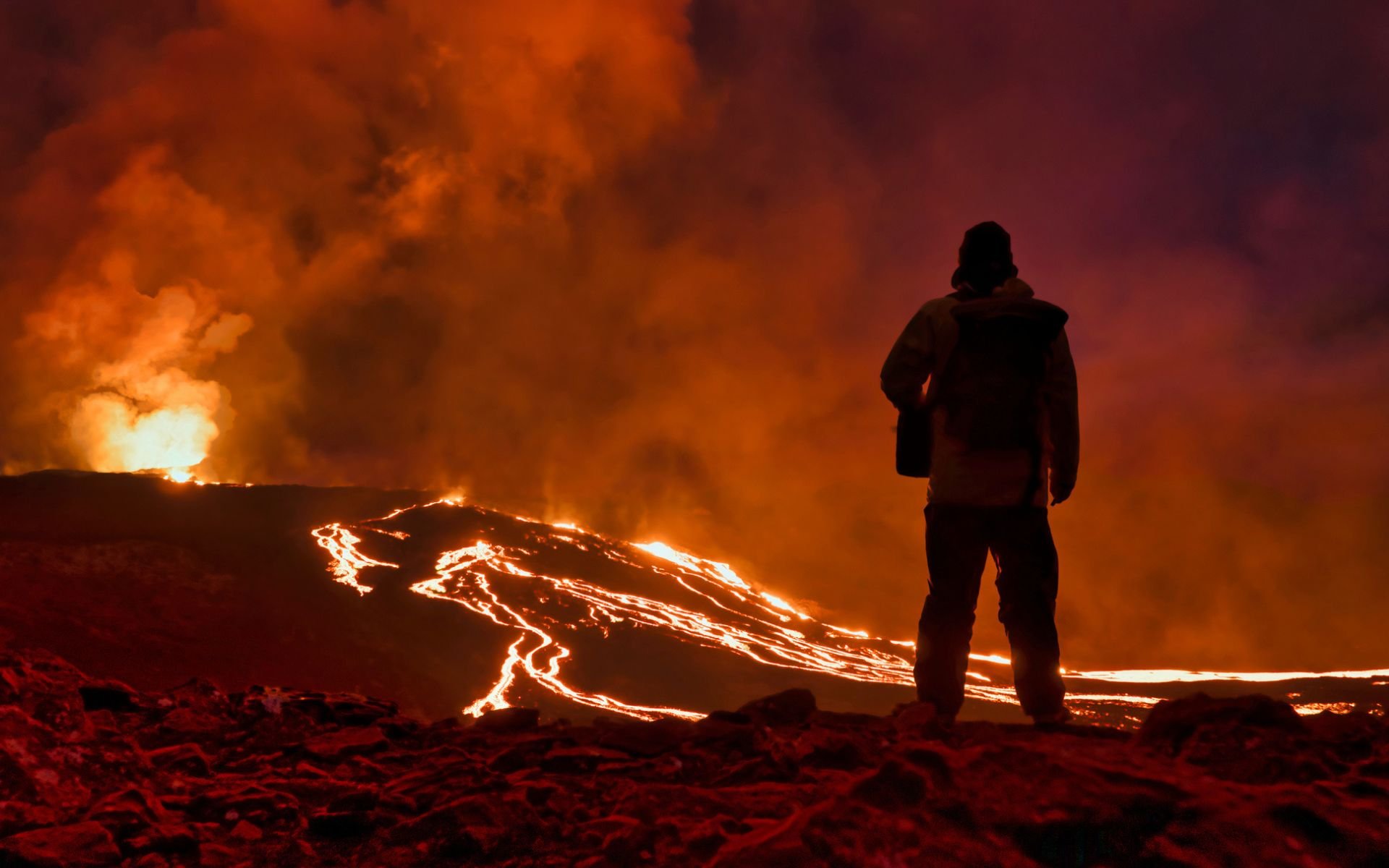According to information published by the Southern Iceland Volcanoes and Natural Risk Group on Facebook, a significant eruption occurred in southwestern Iceland last Monday night (18). Reports and news show that A new volcanic fissure has begun to open in the area north of Sundhnúkur, just three kilometers from the small town of Grindavík.
As announced by the Icelandic Meteorological Office (IMO), at 22.17, earthquakes began to occur in southwestern Iceland for an hour, after which a four-kilometer crack opened in the Sundhnúk region. The explosion occurs throughout the crack, but some areas record significantly higher levels than others.
The IMO also announced last week that: Between 300 and 500 small earthquakes occurred in Iceland in one day. According to the information obtained, approximately 4 thousand people were evacuated from the Grindavik region after the authorities predicted that more earthquakes and a possible new explosion could occur in the Reykjanes Peninsula.
“The power of the eruption, which started about 4 hours ago, seems to be decreasing. The fact that the activity is already decreasing is not an indicator of how long the eruption will last, but rather an indication that the eruption has reached balance. This trend has been observed. In the official statement of IMO, “The events that have occurred in the Reykjanes Peninsula in recent years are “At the beginning of all explosions”.
Earthquakes and eruptions in Iceland
In an interview with the website Live ScienceDavid Pyle, professor of earth sciences at the University of Oxford in the UK, said: The eruption is so impressively fast that lava could fill an Olympic-sized swimming pool in just 20 seconds. According to the professor, the earthquakes have already stopped and the crack level of the explosion has stabilized.
This Tuesday (19) the country’s meteorological agency stated that the explosion did not threaten the lives of local residents. They even state that the fissure has already begun to show signs of a decrease in lava volume. This is the fourth eruption in Iceland since 2021, but this one is thought to be stronger than the others.
“The eruption rate is likely to be around several hundred cubic meters of lava per second, which is enough to fill an Olympic-sized swimming pool in about 20 seconds. The size of the fissure may be an indicator of how much magma has accumulated in the crust over the past few weeks,” Pyle wrote in an email message. .
Did you like the content? Stay up to date with more science and technology news at TecMundo. If you wish, take the opportunity to find out whether there is an active volcano in Brazil or whether it is still active.
Source: Tec Mundo
I’m Blaine Morgan, an experienced journalist and writer with over 8 years of experience in the tech industry. My expertise lies in writing about technology news and trends, covering everything from cutting-edge gadgets to emerging software developments. I’ve written for several leading publications including Gadget Onus where I am an author.












